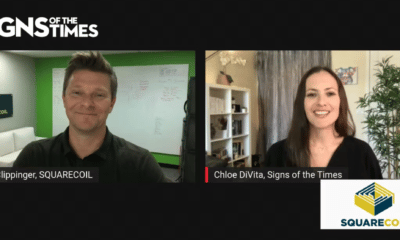WHETHER SKETCHED BY hand or fashioned by high-tech software, a sign’s initial renderings provide a launching point for creative give-and-take with clients — and serve as the first step of a multi-stage signmaking process. Here, four shops share their design strategies behind signs that captured just the right look to wow their clients.
 SET ’EM UP: The design for this bowling alley sign called for more vibrant colors than the previous sign’s more subdued palette.
SET ’EM UP: The design for this bowling alley sign called for more vibrant colors than the previous sign’s more subdued palette.
Vintage Flair
Shop: Signarama Troy | Metro Detroit | Location: Troy, MI | URL: michigansignshops.com
When it came time to reimagine the sign for Shelby Lanes, a bowling alley in Shelby Township, MI, lead graphic designer Marissa Ciavone knew she wanted a look that blended vintage charm with a modern aesthetic.
Ciavone, who has worked with Signarama Troy | Metro Detroit for a decade, initially sketched the sign’s design using SketchUp, a 3D-modeling software. She then built flat drawings and proofs using Adobe Illustrator. “They didn’t come to us with an existing logo or anything, so it was one that I got to have a little bit of fun with,” Ciavone says. “It was really awesome to be able to come up with my own idea and have them be so happy with it.”
Using notes shared by the Signarama Troy | Metro Detroit sales team — who had met with Shelby Lane representatives to learn about their brand, culture and vision for the new sign — Ciavone set about creating a signage concept that, in her words, could “capture the fun visual appeal and nostalgic vibe of the bowling alley.”
The new sign was meant to replace an existing one that had been on site for more than 20 years, and Ciavone enjoyed the opportunity to add a modern twist to the classic bowling ball-and-pin motif. “When I started the design, I wanted to propose something that would catch their eye, so that we could win the project,” Ciavone says.
Once the Signarama team had secured the project contract, Ciavone had to make slight revisions to her original design to follow city code ordinances for signage height. Shelby Lanes’ former sign was taller than the current sign code’s height limitations, but it had been grandfathered in. The new sign, however, had to accord with the new, shorter limit. To reduce the new sign’s height to an acceptable level, Ciavone modified her initial design slightly, placing the bowling ball and pins to the side of the large, white channel letters spelling “bowl,” rather than above them as she’d originally proposed.

“It was really awesome to be able to come up with my own idea and have them be so happy with it.”
“The client’s feedback from the original 3D rendering was that they really liked everything. So, there weren’t many changes based on customer feedback. It was really just modifying the design to make sure it fit with the city code,” Ciavone says.
While the bowling lanes’ previous sign included a traditional changeable-copy letter board, the new one features an LED display that delivers an easier, modern means of sharing news about sales or special events. And while the older sign used a yellow and turquoise color pallet, Ciavone opted for black, red and yellow. “We wanted to use colors that would be vibrant in the space,” she says.
The sign was installed in Feb. 2024, after roughly six months of design, planning, and fabrication. All in all, Ciavone says the Shelby Lanes project was emblematic of the positive working collaboration that Signarama Troy | Metro Detroit strives for in all of their projects.
“We have a very open office space, so our sales team does a great job bringing back information from the client,” Ciavone says. “They’ll give us some initial sketches, or they’ll let us know if the customer isn’t quite sure yet what they’re looking for. And then we just kind of collaborate to draw up multiple options that we hope the client will be happy with.”
 WINGED VICTORY: This B-17 memorial is a triumph of design, one suitable for such a subject.
WINGED VICTORY: This B-17 memorial is a triumph of design, one suitable for such a subject.
Memorial Tribute
Shop: Bakers’ Signs & Manufacturing | Location: Conroe, TX | URL: bakerssigns.com
Sometimes participating in a sign build feels more like an honor than a job. That was the case for Matt Baker’s team, who helped design and build a World War II B-17 Memorial for the Montgomery County Veterans Memorial Park in Conroe, TX.
Dedicated on Oct. 8, 2023, the sign features a ⅛-scale Boeing B-17 plus a central memorial panel flanked by two Daktronics LED panels that showcase archival footage of the bombers and their flight crews.
 A WWII Boeing B-17 Bomber in flight.
A WWII Boeing B-17 Bomber in flight.
“They’ve been exceptional about giving us full reign to let our creativity run wild.”
The memorial serves a dual purpose. It honors WWII veterans and the critical role the B-17 played in helping the Allies win the war. But it also commemorates the six men who lost their lives during a mid-air collision between a B-17 and a Bell P-63 Kingcobra at the Wings Over Dallas air show in 2022. The recently lost B-17, a plane known as “Texas Raiders,” had its home base in Conroe.
Gullo Ford of Conroe, an area car dealership, sponsored the $300,000 cost of the memorial, which was authorized by the Montgomery County Veterans Memorial Commission in partnership with the Gulf Coast Wing of the Commemorative Air Force.
 NIGHT FLIGHT: Flanking Daktronics displays and lighting illuminate the memorial (left) after precision painting in the shop (above).
NIGHT FLIGHT: Flanking Daktronics displays and lighting illuminate the memorial (left) after precision painting in the shop (above).
Thomas Turner, formerly of Bakers’ Signs, created the initial design from a vision that came to him right away. In advance of the memorial’s unveiling, he told hosts of a morning show on Conroe’s Lone Star Community Radio that he immediately knew the monument should show “a B-17 in flight, in all its glory.”
The sign includes an embedded QR code that visitors can scan to be directed to a website with additional information about the history of the B-17. Turner told the radio show that he hoped the memorial would offer visitors a chance to honor the crews of the B-17 and learn more about their history and legacy.
 FLAPS? CHECK! The 1/8 scale model was fabricated by a company in California.
FLAPS? CHECK! The 1/8 scale model was fabricated by a company in California.
The replica B-17, which has a 13-ft. wingspan and runs more than 10 ft. from nose to tail, includes all the colors and specifications of a real B-17. The plane was manufactured by a company in California, while Bakers’ Signs fabricated all other aspects of the memorial.
Bakers’ Signs has a longstanding partnership with the Montgomery County Veterans Memorial Park, where they have designed and installed roughly a dozen previous projects. For this one, Bakers’ staff worked closely with the park’s governing board, including Chairman Jimmie C. Edwards, to develop the design.
“The beautiful thing about this client is they’ve been exceptional about giving us full reign to let our creativity run wild,” says Matt Baker, Bakers’ Signs co-owner. “They gave us an initial idea of what they wanted to do. And then we worked up a 3D rendering for them of this sign, and they absolutely loved it.”
The final memorial follows Turner’s original design concept almost exactly. “I honestly don’t think they made any changes from what we initially sent them. Our original concept was what they rolled with,” Baker says. “And they’ve absolutely loved how it turned out.”

Nameplate Perfection
Shop: Great American Sign Co. | Location Basking Ridge, NJ | URL: greatamericansign.net
Sometimes design projects require multiple rounds of revisions to capture the look a client is envisioning.
Signmaker Gary Johnson, owner of Great American Sign Co., designed several prototypes for a sign to hang outside the Peter Pan cabin at Okayama Hiruzen Villas, a rental village in Okayama, Japan, before landing on a final version the client loved.
Johnson’s first 3D renderings played heavily on the Peter Pan theme, with a Captain Hook-inspired pirate, a scroll and a large pirate ship. But that wasn’t what the client had in mind. “I had done some research on what Disney had done for imagery for their DVD covers and books, but that was a little too Peter Pan for her,” Johnson says of the client’s initial reaction. “It turned out she didn’t want any sort of Peter Pan-specific imagery.”
In the next iteration, Johnson toned down the imagery to use only a small ship. With it he paired a font that, he felt, nodded to the “sort of cartoonish nature of the Peter Pan story.” The client liked the overall design, but she wasn’t crazy about the font choice. Design tweaks were exchanged in back-and-forth emails over about a month.
Advertisement
 GET THE HOOK These preliminary designs were “too Peter Pan” for the client and were ultimately replaced (see photo at top).
GET THE HOOK These preliminary designs were “too Peter Pan” for the client and were ultimately replaced (see photo at top).
To help finalize the design, Johnson eventually invited the client into his shop to offer live feedback as he substituted in font alternatives. Eventually, they settled on Times New Roman for the villa name and a font similar to Raphael for the cabin name.
“I’ve only had the customer look over my shoulder to go through type styles perhaps two or three times in my career. Sometimes, that’s just what you have to do when you get to the point that it’s down to a font choice. In those cases, it can be helpful to just flip through type styles together,” Johnson says.
The client had requested a black background with gold lettering, so once the font selections were made, the rest of the design fell into place easily. Johnson fabricated the sign using DUNA-USA CORAFOAM HDU and a MultiCam 3000 Series CNC router. He used Benjamin Moore outdoor paints to give the dimensional plaque its final look, before delivering the final product to his client in summer 2024.

“The process for this project went fairly smooth,” Johnson says. “At times, you can have customers who don’t know what they want, but they know what they don’t like. And you’ll show them drawing after drawing, and the feedback is, ‘I don’t like that.’ In those cases, the design process can drag out forever.”
To combat these potential stalemates, Johnson tends to do quick initial renderings using Procreate or Gerber Omega software on his iPad. This way, he can get a sense of what’s a hit or miss with clients before diving in further to fine-tune the look.
Alternatively, he sometimes asks clients to provide photos of signs they like from Pinterest or other sources, so he can quickly assess the aesthetic they’re after. “Sometimes, clients have something in their head, but they don’t always know how to explain what it is that they want — and having them send photos can help bridge that gap,” Johnson says.
Advertisement
 ORNAMENTAL BEAUTY: The local municipality restricted the copy and dimensional elements to a quarter of this monument’s face.
ORNAMENTAL BEAUTY: The local municipality restricted the copy and dimensional elements to a quarter of this monument’s face.
Beachside Beauty
Shop: Coastal Signs & Graphics | Location: Slocomb, AL | URL: coastalsigngraphics.com
Todd Sallas, co-owner of Coastal Signs & Graphics, has found that providing clients with a small-scale, inexpensively printed 3D model of a sign design can go a long way in helping clients visualize and approve a project concept.
The scaled-down models give clients a sense of the depth and proportions of the sign in ways they sometimes can’t get from traditional 2D renderings. “We always send out flat renderings, but we’ll also do scale models for any project where we feel it might help the client better understand the dimensions,” Sallas says.
In the case of new entrance signage for the Hidden Dunes Beach & Racquet Resort in Miramar Beach, FL, Sallas’ model helped the resort’s ownership board more easily visualize his proposed design, the depth of the end columns, the raised relief of the sand dunes and the sea oat embellishments.

The design included an all-aluminum build to withstand rust in the beachside environment. Instead of the former sign’s 40-year-old neon palette, Sallas suggested neutral colors that would not require frequent repainting. “The old sign had sand dunes made from a foam stucco structure. But as I pointed out, after a while, stucco mildews,” he says. “And so we began with an approach of, ‘How can we achieve that look, but in a better way?’”
The client had originally wanted a stacked stone base for the sign, but Sallas steered them away from that idea since there was no stone anywhere else on the property. “We just told them, ‘Honestly, we don’t think the stone fits,’” he says.
Winning design approval from the property owners was relatively easy. Getting county code approval was less so — especially since Walton County is well-known for strictness about its sign permitting. Sallas had to navigate newly established restrictions on the sign’s footprint size and, unexpectedly, its percentage of copy.
“They kicked it back and said, ‘No sign can have more than 25% copy.’ They claimed everything on the sign, including the dunes and oats, was ‘copy’ because it was all dimensional,” he explains.
To receive variance approval, Sallas’s team was asked to revise their design from the proposed face-lit channel letters to reverse-lit channel letters. After multiple steps and substantial time delays, the team was finally cleared to move ahead. The sign was installed in Sept. 2024, following roughly six months of design, permitting and fabrication.

Because Coastal Signs begins each design using Adobe Illustrator for initial sketches and then Autodesk Fusion 360 for 3D rendering, fine-tuning changes to sign components here and there was relatively easy, Sallas says. He is already finding success utilizing new AI-embedded tools within Adobe Illustrator to whip up multiple design approaches for his clients.
“[AI tools] allow you to work through the design process faster,” he says. “Instead of spending two to three hours on an idea that might not work, you’re spending about 15 minutes to create multiple variations — so it’s a huge time savings.”
PHOTO GALLERY (25 IMAGES)
PHOTO: Signarama Troy | Metro Detroit| Bakers’ Signs & Manufacturing | Great American Sign Co. | Coastal Signs & Graphics
Advertisement

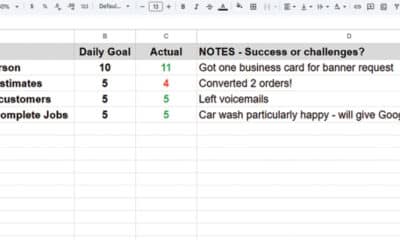
 Maggie Harlow1 week ago
Maggie Harlow1 week ago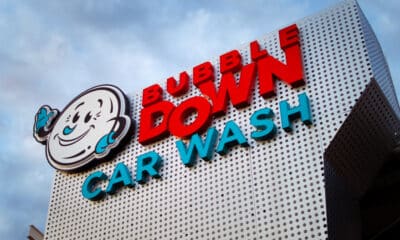
 Product Buying + Technology3 days ago
Product Buying + Technology3 days ago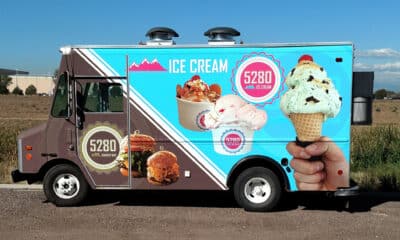
 Mark Kissling1 week ago
Mark Kissling1 week ago
 Columnists3 days ago
Columnists3 days ago
 Eric E. Larsen2 weeks ago
Eric E. Larsen2 weeks ago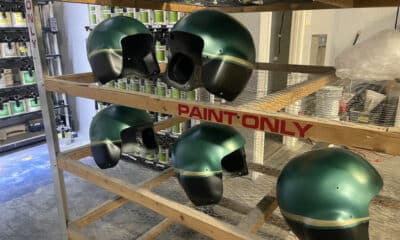
 Dale Salamacha2 weeks ago
Dale Salamacha2 weeks ago
 Business Management4 days ago
Business Management4 days ago
 True Tales1 week ago
True Tales1 week ago



 A WWII Boeing B-17 Bomber in flight.
A WWII Boeing B-17 Bomber in flight. 






































